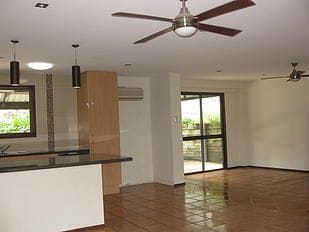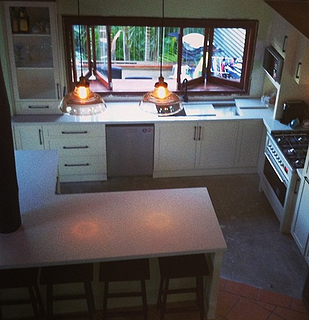Sound Issues - Noise proof your walls
)
Noise Solutions for your Home
If you are building or extending a home or planning a renovation, think carefully about noise control. Gyprock has designed wall and ceiling products and systems that allow you to control noise transfer within your home and block unwanted noise from outside.
With some basic understanding of building acoustics and careful consideration of the room use and layout of your home or extension, you can quiet zones where you need them and keep noise where it belongs.
Unwanted noise can be an issue in any room in a home but these are the more typical situations that need to be considered:
- Homes under flight paths or near busy roads
- Between floors of multi-storey homes
- Home theatres and entertainment rooms
- Other special purpose rooms with high noise levels
- Rooms adjoining kitchens, laundries & garages
- Large open plan areas
- Rooms with a high level of hard floor coverings
Gyprock Acoustic Plasterboard
Standard Gyprock Plasterboard is the recommended internal lining for residential homes. Our range of residential specialty boards that offer increased acoustic performance are:
Gyprock Soundchek
Soundchek is a high density recessed edge plasterboard that is available as a 10mm plasterboard for standard residential construction and 13mm for acoustic rated commercial applications and high performance residential requirements.
Gyprock Superchek
Superchek is part of Gyprock's environmental range. It is a premium, high recycled content 10mm plasterboard manufactured with a denser core and heavy duty facing material. Superchek has excellent acoustic insulation properties, higher levels of impact and scuff resistance and superior environmental credentials.
Gyprock Supaceil
Supaceil is Gyprock's recommended plasterboard lining for ceilings. It has a specially designed core which gives it improved acoustic performance and sag resistance.
| Posted in:Design Tips |
Roof Leak
)
Here are a few tips that may save you some time and money
Rainy weather is when roof leaks get discovered, this is when it's too late for a repair.
No time to contemplate, no time to plan, just get to the phone and get a roofer and plasterer as soon as you can.
There are ways to slow the leaks down until you can navigate yourself into a repair, by looking on your roof.
It is important you to deal with the leaks outside the house to minimize interior damage.
Here's what happens:
- A water leak from the roof will slowly pond at the ceiling until it finds an escape route punch a hole right in the middle and be prepared to collect a flood of water.
The solution to this problem really is quite simple. All you have to do is look for either the "bulge" or the ponding water.
Please refer to our previous post here for more information.
How to locate and prevent a disastrous ceiling leak
)
Ceiling leaks can be a hazardous breeding ground for moulds and termites. Should you suspect a leak, make a hole in the wet part of the ceiling. This will make the damaged area minimal so that your repair will not be as extensive.
See some tips on how to locate your leak before your plaster repair takes place.
- Roof Leaks determine if the leak occurs only during bad weather or is a continual problem rain or shine. If the leak dries out between storms, this is a good indication that the leak starts somewhere on the roof. If the leak is consistent when it rains or shines, the leak probably comes from a plumbing water supply line.
- Examine the water leaking from the ceiling. If the water appears fresh, there's a good chance it comes from a leaking plumbing line or fixture. If the water is dirty or stains the ceiling, the source might be a leak in the roof.
- Gain access to the attic and, with a flashlight, find the place where the ceiling is wet between roof joists. You will need to remove any insulation in the way of the leak. If there is a plumbing line near the leak, such as the supply line for a swamp cooler, check the line for leaks or moisture.
- Look up at the ceiling while in the attic and note any spots where light shines through. Insert a plastic straw through the hole. This will help you find and repair the hole from atop the roof.
- Inspect the inside of the attic ceiling for water stains or trails. Follow the water trail or stain to its source. Make note of the area if there are no visible holes, as water might be getting under roof flashing and causing the leak.
- Inspect the roof's exterior. You may need a roofer or plumber for this.
- Start at the top of the roof and work down. Check valley flashing, gaskets around plumbing vents and utility entrances. Inspect flashing around chimneys, dormer vents or other roof protuberances. Look for any shingles in need of repair.
- Review all areas of the roof where two different materials meet, such as between siding, shingles or flashing. Look for corroded or damaged materials as sources of ceiling leaks.
- Check gutters and downspouts for clogs. Backed up drainage water can get under flashing and cause a ceiling to leak.
| Posted in:Tips |
5 things you can do to modernise your home on a budget!
Pre paint and paint
If you do not have the time and budget for the entire house a feature wall is very effective, neutral paint colours are so refreshing.

Remove walls, rounded entrance's and archways
The results are what brings your home out of the 80's and in to the now.

Change your kitchen splashback and handles
If you do not have the budget for a glass splashback or a Tiler you can buy white knight tile paint and paint over your existing tiles.

Cushions
Can brighten up any home, change your styles and colours with the season.

New lights
Can change the feel of a home with out breaking the bank.
| Posted in:Design Tips |
)
)
)
)
)
)